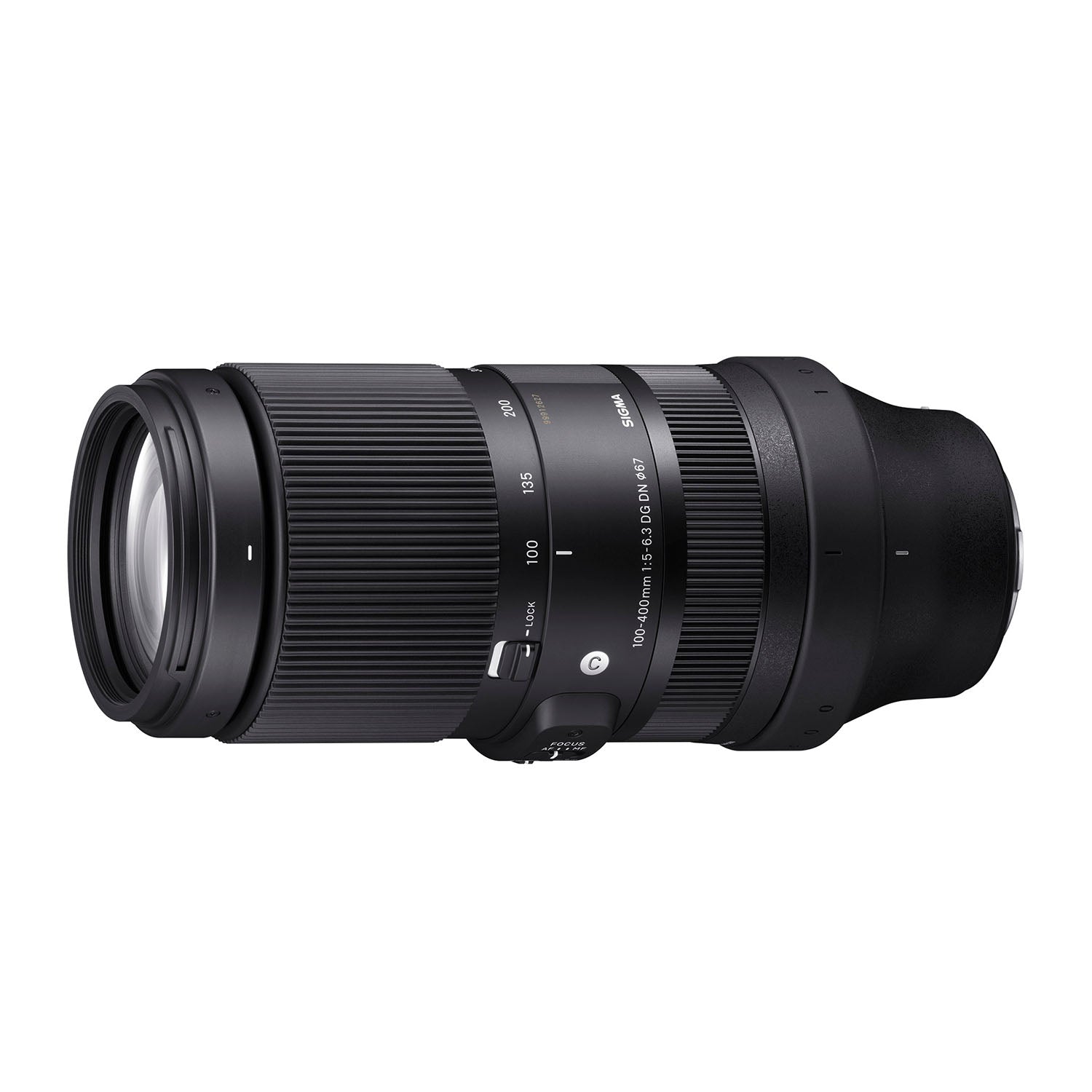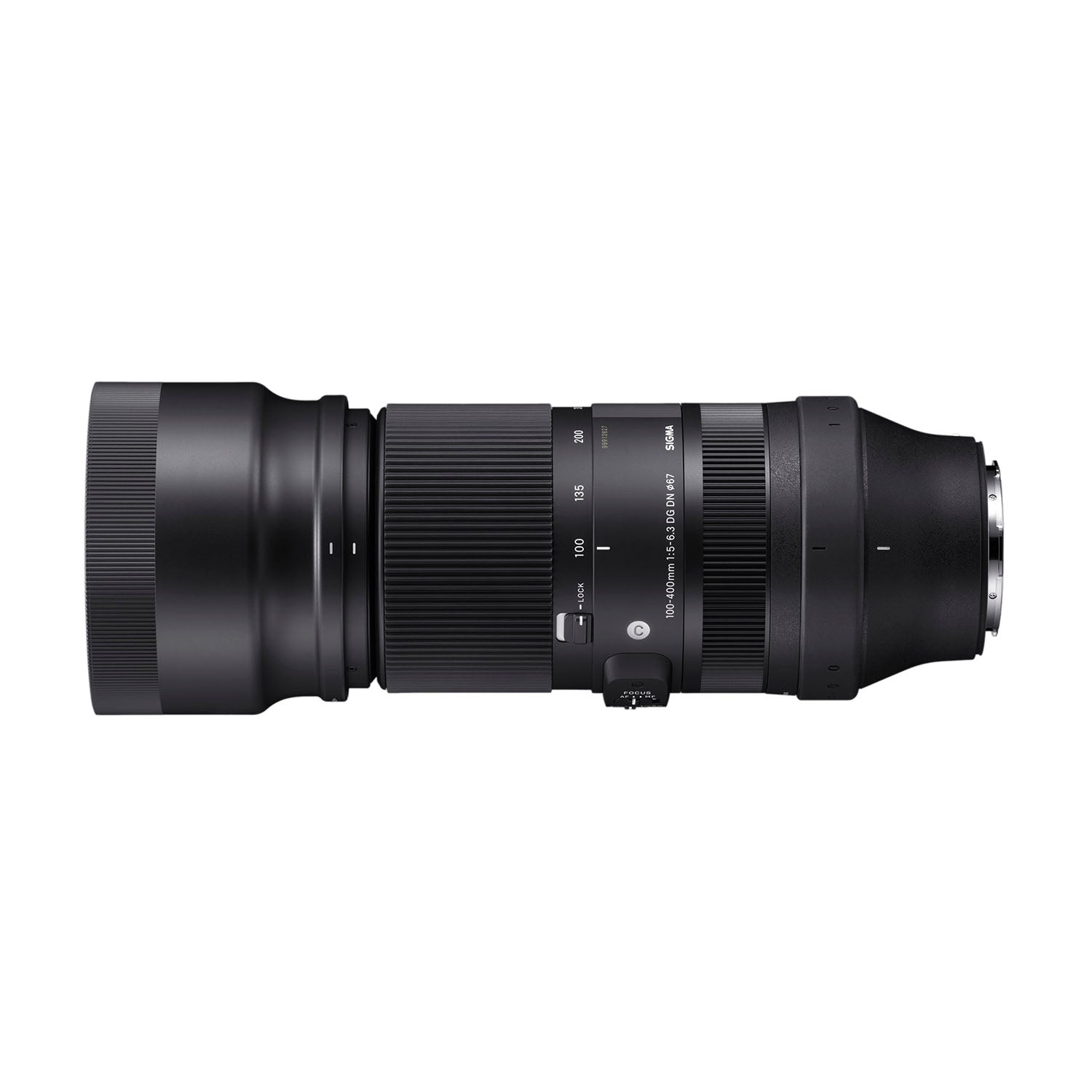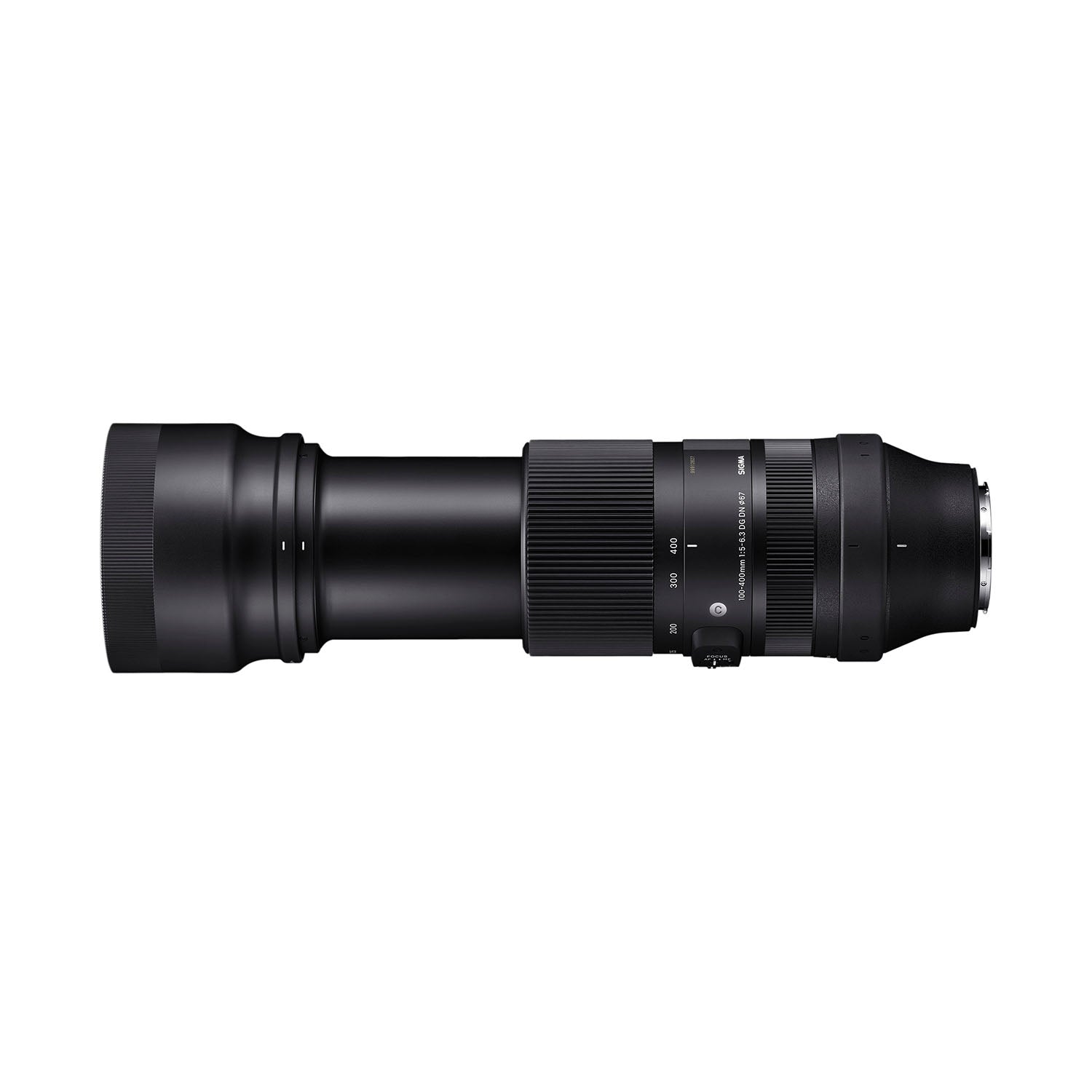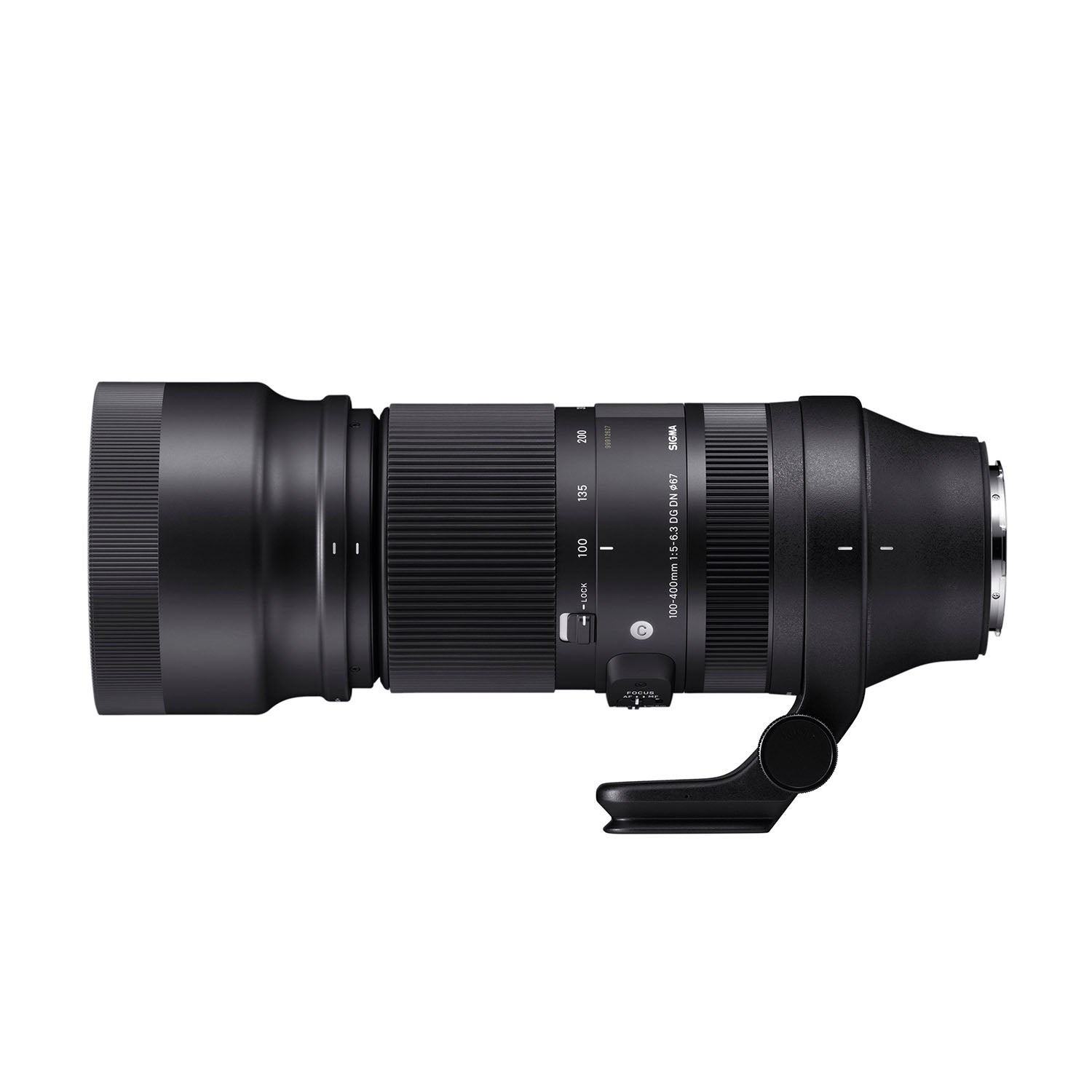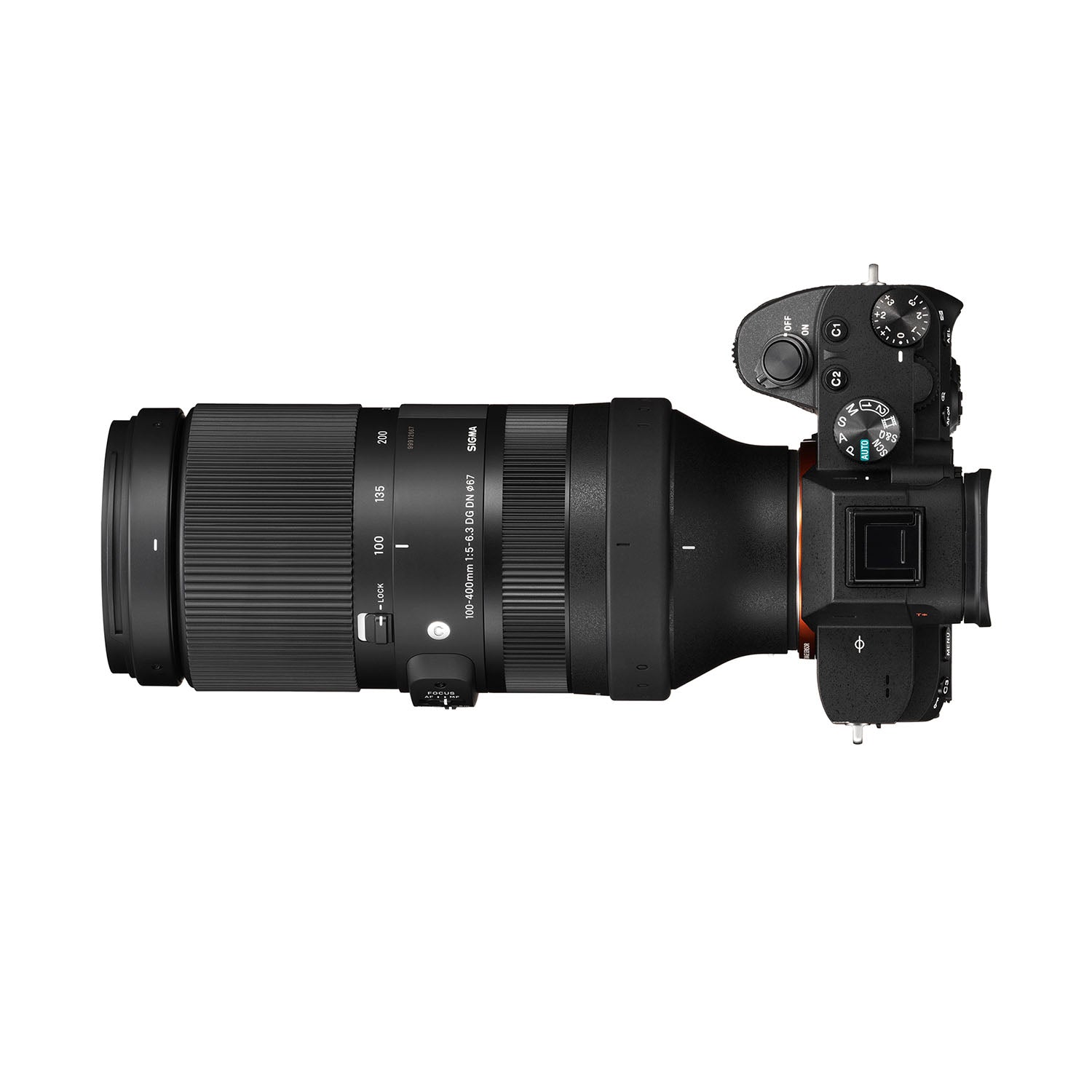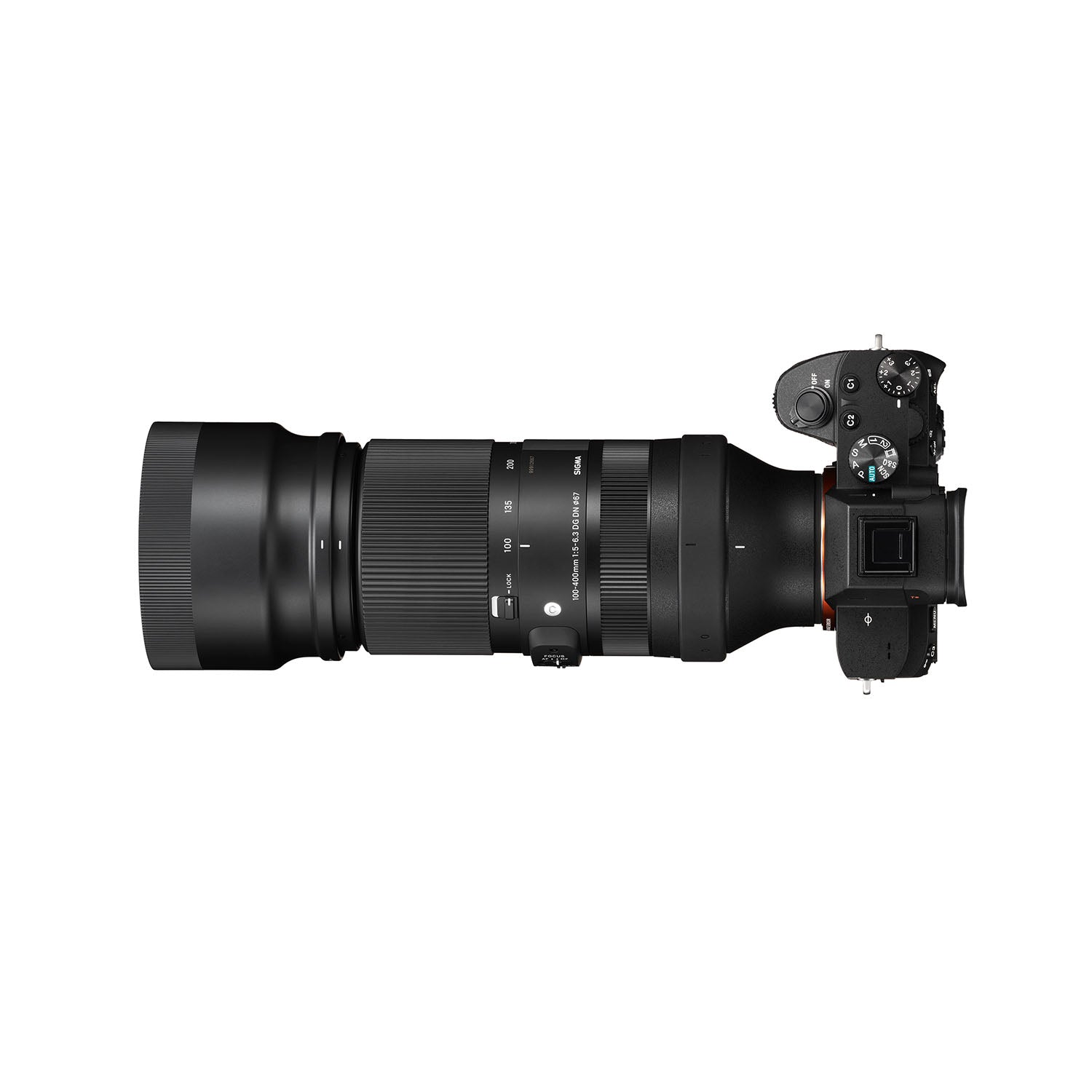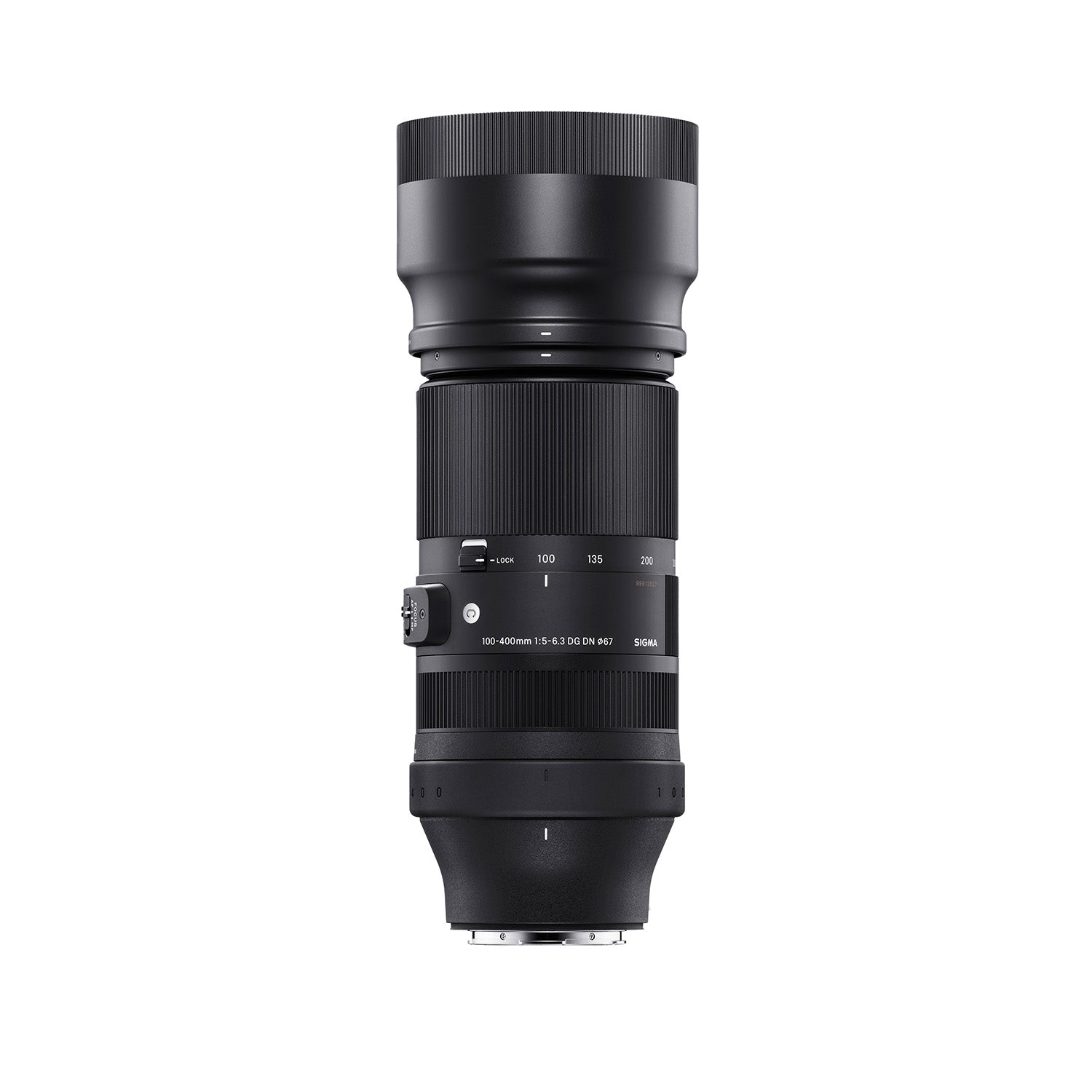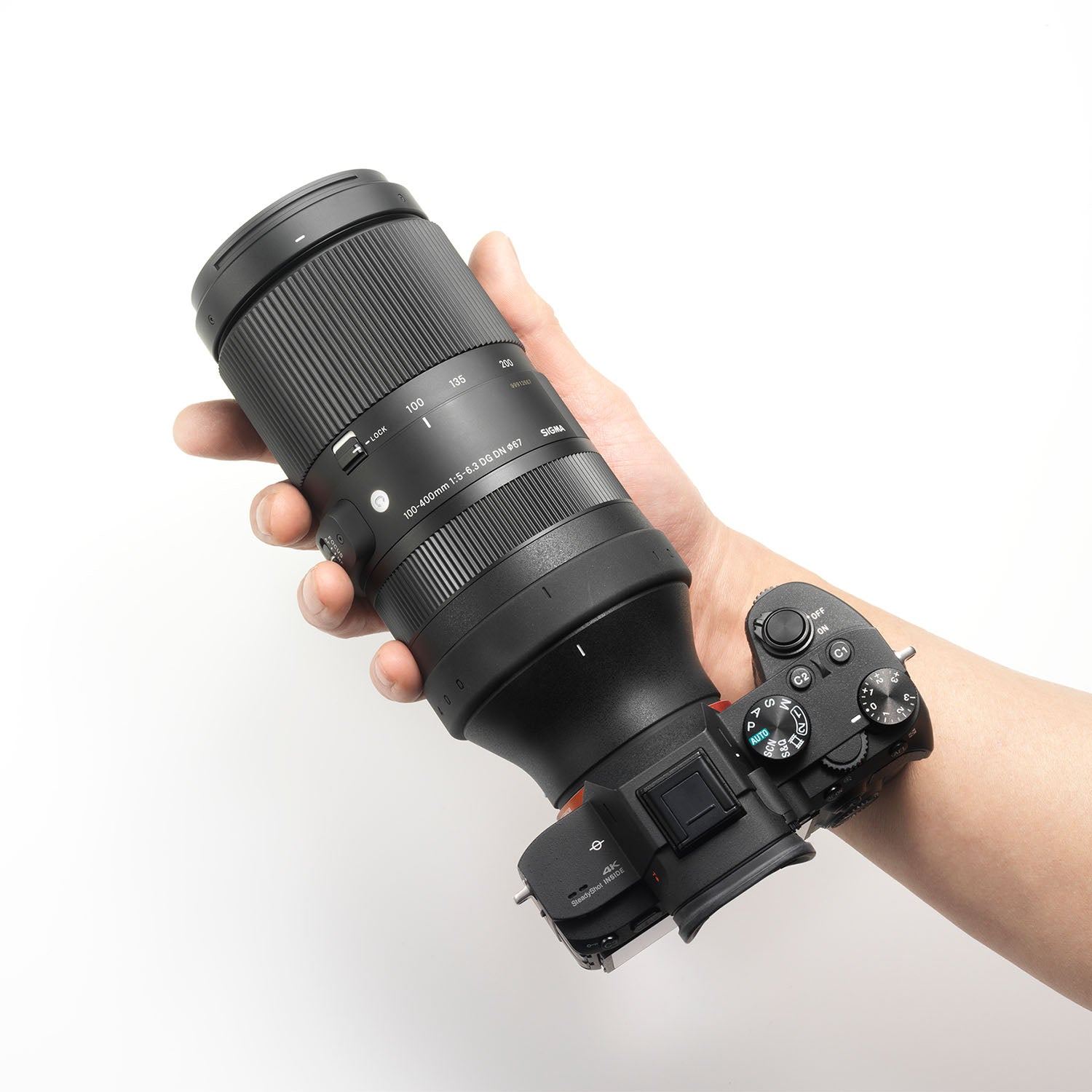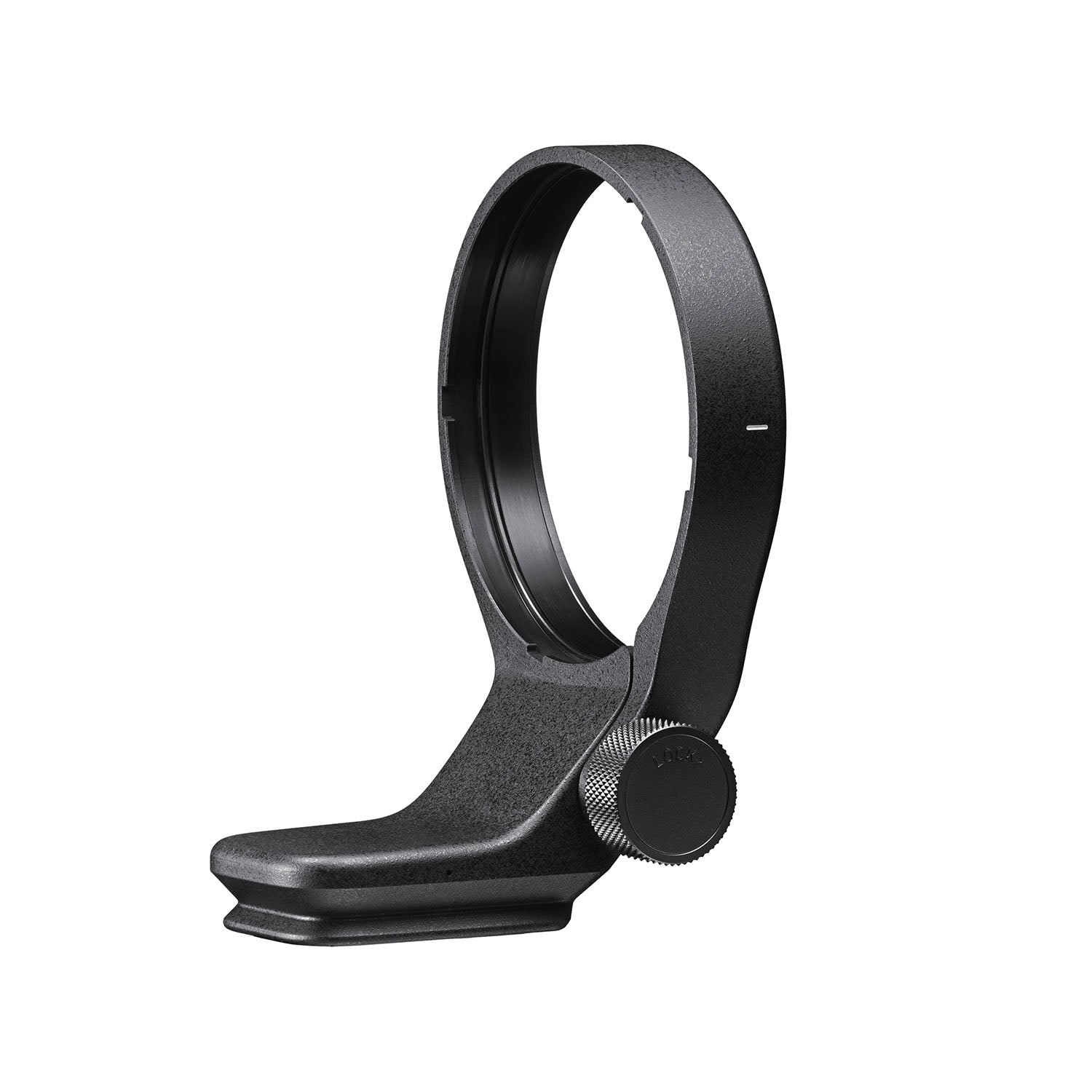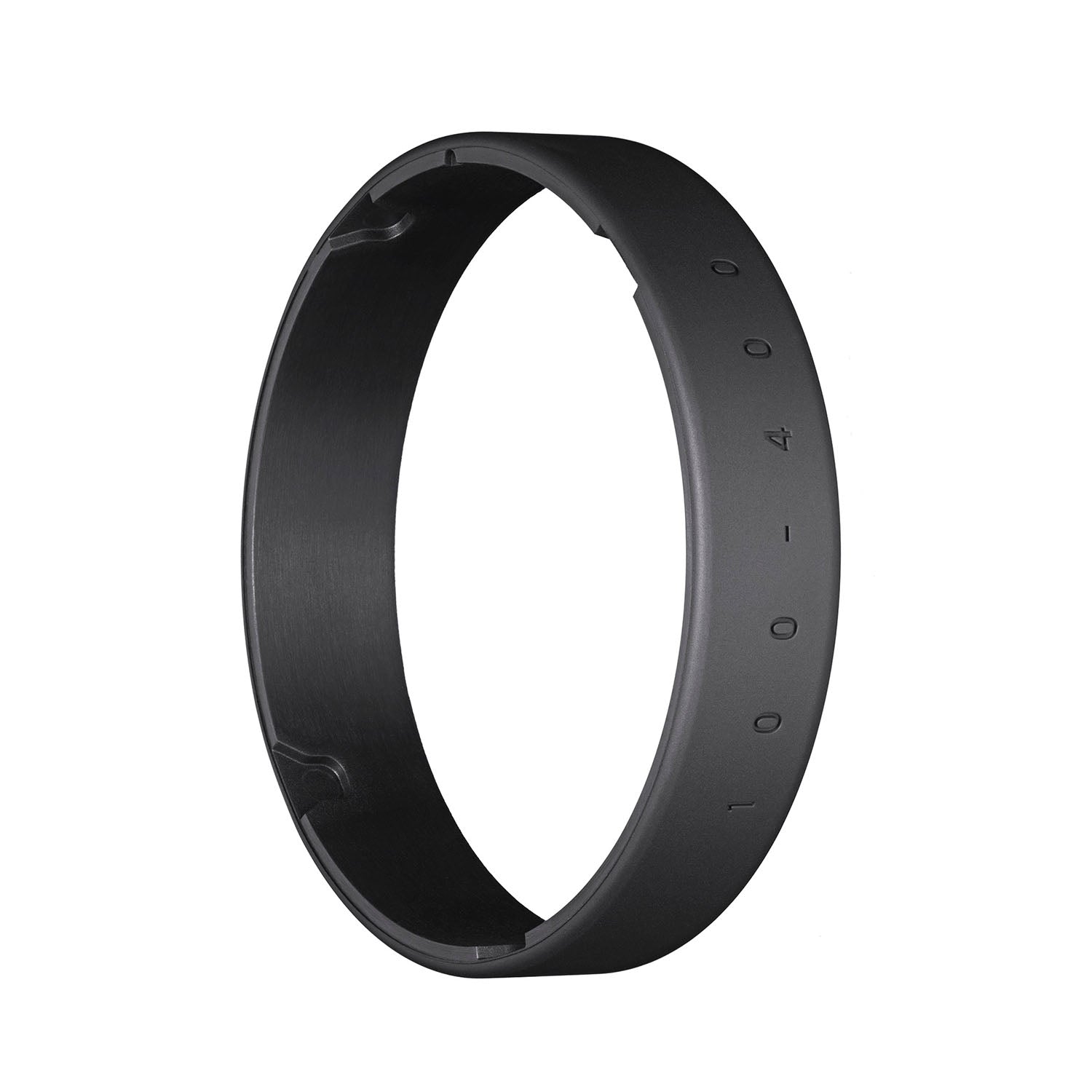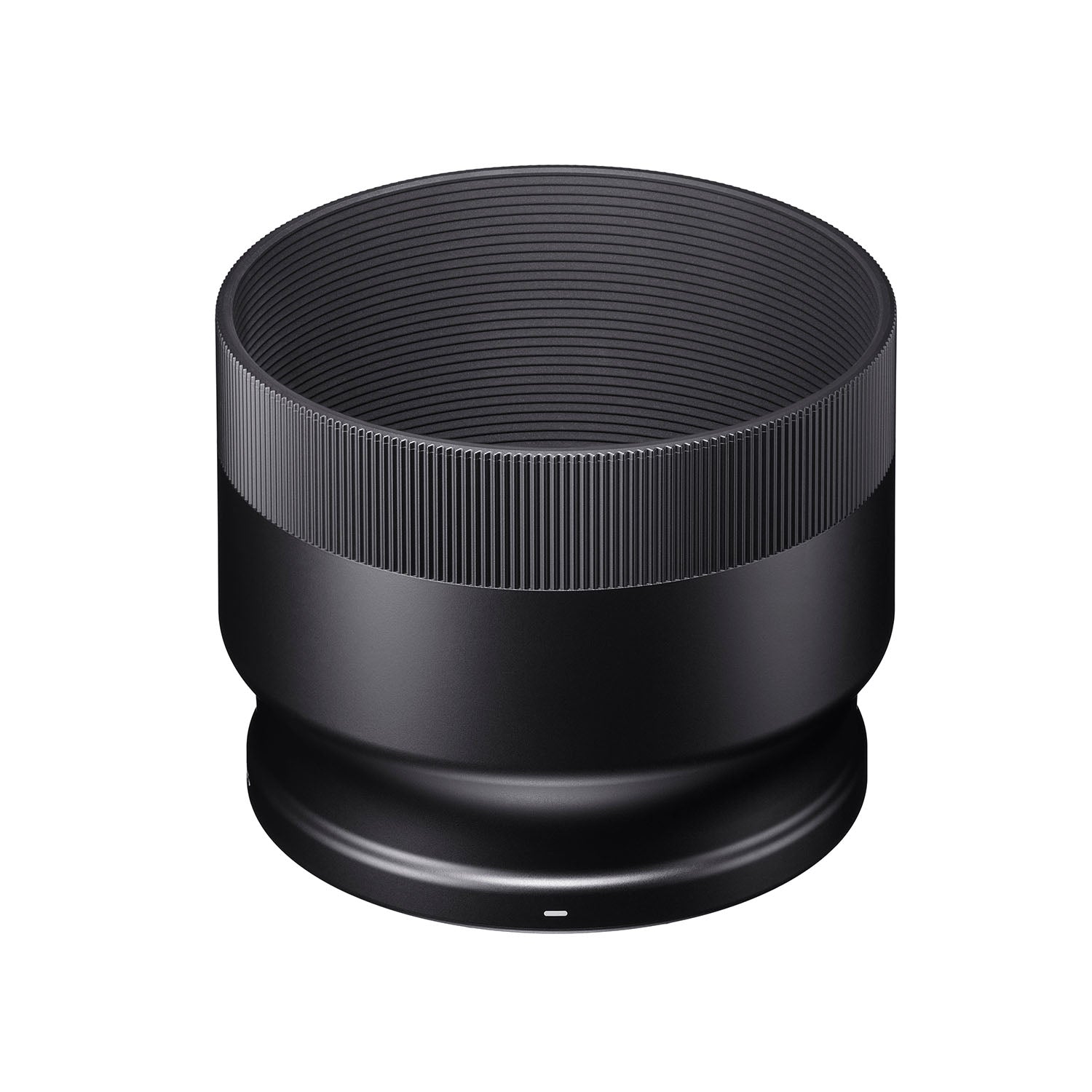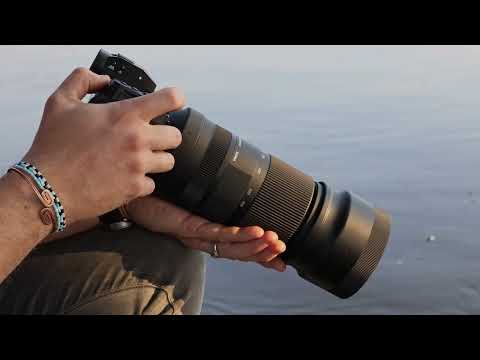Product Description
Introducing the Sigma 100-400mm f5-6.3 DG DN OS - Contemporary for Fujifilm X Mount
An ultra-telephoto zoom lens with optical performance and functionality that delivers professional-quality results, all packed into a lightweight and compact body. This versatile, ultra-telephoto zoom is the perfect lens for travel and action photographers.

Key features include:
- Dual Action Zoom: Choose between precise control with the zoom ring or quick adjustments by pushing/pulling the lens barrel.
- Optical Stabilizer: The intelligent two-mode stabilizer reduces camera shake, allowing for sharp images at slower shutter speeds.
- Customisable Controls: An AF/MF switch, an AFL button, and a focus limiter switch provide flexibility and enhanced functionality.
- Dust and Splash-Proof Mount: A durable brass mount with a rubber seal ensures reliable performance in various shooting conditions.

Unique Features
The new FUJIFILM X Mount version of the 100-400mm F5-6.3 DG DN OS features a unique AF Function Setting switch and AF Function button, not found on the L-Mount and Sony E-mount versions. It retains the same high-quality FLD and SLD glass elements, creating sharp images across the whole frame and throughout the entire zoom range. Other features include a two-mode optical stabilizer, focus limiter switch and dual action zoom. With a focal length of 100-400mm and a 1:4.1 magnification ratio, the lens can be used for a wide range of photography genres, including wildlife, sports, close-up and even portraits.

Optical Quality
The versatile SIGMA 100-400mm F5-6.3 DC DN OS | Contemporary uses high-quality SLD and FLD glass elements to produce ultra-sharp images across the frame and throughout the entire zoom range. The front element is coated with SIGMA’s Super Multi-Layer Coating which effectively minimizes flare and ghosting. Its weight of 1135g and compact design that’s packed with features make this lens ideal for travel and for photographers who prefer lightweight lenses.

AF Functionality
New AF Focus button and AF Focus Switch Due to differences in camera software, the lens features a new AF Function Setting switch and AF Function button, replacing the AF/MF Switch and AFL buttons found on the L-Mount and Sony E-mount. The switch can be toggled to change the function of the button between AF Lock and AF activation on the fly.

Performance
Shoot fast-paced action and close-up macro The SIGMA 100-400mm F5-6.3 DG DN OS | Contemporary supports dual-action zoom. The lens can be zoomed in or out by turning the zoom ring for precise control, or by pushing and pulling the lens hood to quickly react to fast-paced action. Set the AF Limiter switch on the side of the lens to control the focus range, to reduce lens hunting when shooting busy scenes and when subjects are a set distance away.

Macro Capabilities
Macro and portrait photographers can take advantage of the 1:4.1 magnification ratio and 160cm minimum focus distance at 400mm to capture close-up images with creative background compression. Improved Optical Stabilization As the lens has been optimized for Fujifilm cameras, the stabilization effect has increased from four to five steps. This can allow users to shoot in lower light conditions with slower shutter speeds, with improved results.

Specifications at a Glance
- Lens Construction: 22 elements in 16 groups
- Angle of View: 24.4°-6.2°
- Diaphragm Blades: 9 (rounded)
- Minimum Aperture: F22
- Minimum Focusing Distance: 112cm-160cm
- Maximum Magnification Ratio: 1:4.1
- Filter Thread: 67mm
- Dimensions (Diameter x Length): ø86.0mm × 197.2mm
- Weight: 1,135g
- AF Mounts Available: L-Mount, Sony E, FUJIFILM X
Enhance your photographic capabilities with the Sigma 100-400mm F5-6.3 DG DN OS, a lens that combines supreme sharpness, fast autofocus, and unmatched portability. Perfect for professionals and enthusiasts alike, it's the ultimate tool for capturing life's dynamic moments with precision and ease.

Payment & Security
Your payment information is processed securely. We do not store credit card details nor have access to your credit card information.

